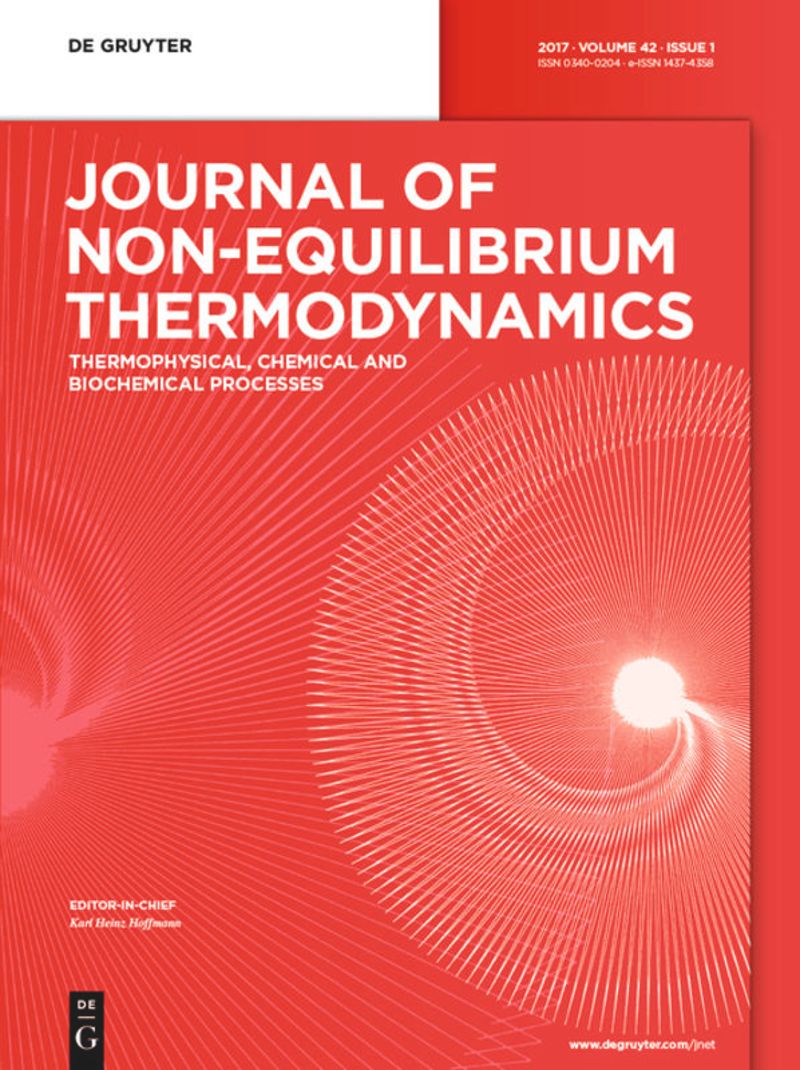软质两相弹性粘弹性材料应力-应变关系的非平衡热力学模型
IF 4.2
3区 工程技术
Q1 MECHANICS
引用次数: 1
摘要
摘要在基于结构颗粒与乳胶成膜的“软-软纳米复合材料”中,颗粒结构和颗粒间交联的结合导致材料在小应变下表现为非线性粘弹性流体,在大应变下表现为高弹性网络。类似地,在聚合物的流动诱导结晶研究中,经常调用两相模型,其中软粘弹性组分与刚性半晶相相耦合,提供刚度。在目前的工作中,我们使用非平衡热力学(NET)的框架,通过使用两个构象张量来开发以粘弹性和弹性组分为特征的两相系统的应力-应变关系:第一个构象张量描述粘弹性相的微观结构,而第二个构象张量与弹性手指应变张量有关,该张量量化了弹性相由于应变而产生的变形,并负责应变硬化。最终输运方程是在NET的广义支架形式下形成的,可以描述从橡胶到人造组织等各种软材料的流变行为和力学响应。本文章由计算机程序翻译,如有差异,请以英文原文为准。
Non-equilibrium thermodynamics modelling of the stress-strain relationship in soft two-phase elastic-viscoelastic materials
Abstract In “soft–soft nanocomposites” based on film formation of latexes with structured particles, the combination of particle structure and interparticle crosslinking leads to materials that behave as nonlinear viscoelastic fluids at small strains and as highly elastic networks at larger strains. Similarly, in studies of flow-induced crystallization in polymers, a two-phase model is often invoked in which a soft viscoelastic component is coupled with a rigid semi-crystalline phase providing stiffness. In the present work, we use the framework of non-equilibrium thermodynamics (NET) to develop stress-strain relationships for such two-phase systems characterized by a viscoelastic and an elastic component by making use of two conformation tensors: the first describes the microstructure of the viscoelastic phase while the second is related to the elastic Finger strain tensor quantifying the deformation of the elastic phase due to strain and is responsible for strain-hardening. The final transport equations are formulated in the context of the generalized bracket formalism of NET and can describe the rheological behavior and mechanical response of a large variety of soft materials ranging from rubbers to artificial tissues.
求助全文
通过发布文献求助,成功后即可免费获取论文全文。
去求助
来源期刊
CiteScore
9.10
自引率
18.20%
发文量
31
审稿时长
1 months
期刊介绍:
The Journal of Non-Equilibrium Thermodynamics serves as an international publication organ for new ideas, insights and results on non-equilibrium phenomena in science, engineering and related natural systems. The central aim of the journal is to provide a bridge between science and engineering and to promote scientific exchange on a) newly observed non-equilibrium phenomena, b) analytic or numeric modeling for their interpretation, c) vanguard methods to describe non-equilibrium phenomena.
Contributions should – among others – present novel approaches to analyzing, modeling and optimizing processes of engineering relevance such as transport processes of mass, momentum and energy, separation of fluid phases, reproduction of living cells, or energy conversion. The journal is particularly interested in contributions which add to the basic understanding of non-equilibrium phenomena in science and engineering, with systems of interest ranging from the macro- to the nano-level.
The Journal of Non-Equilibrium Thermodynamics has recently expanded its scope to place new emphasis on theoretical and experimental investigations of non-equilibrium phenomena in thermophysical, chemical, biochemical and abstract model systems of engineering relevance. We are therefore pleased to invite submissions which present newly observed non-equilibrium phenomena, analytic or fuzzy models for their interpretation, or new methods for their description.

 求助内容:
求助内容: 应助结果提醒方式:
应助结果提醒方式:


